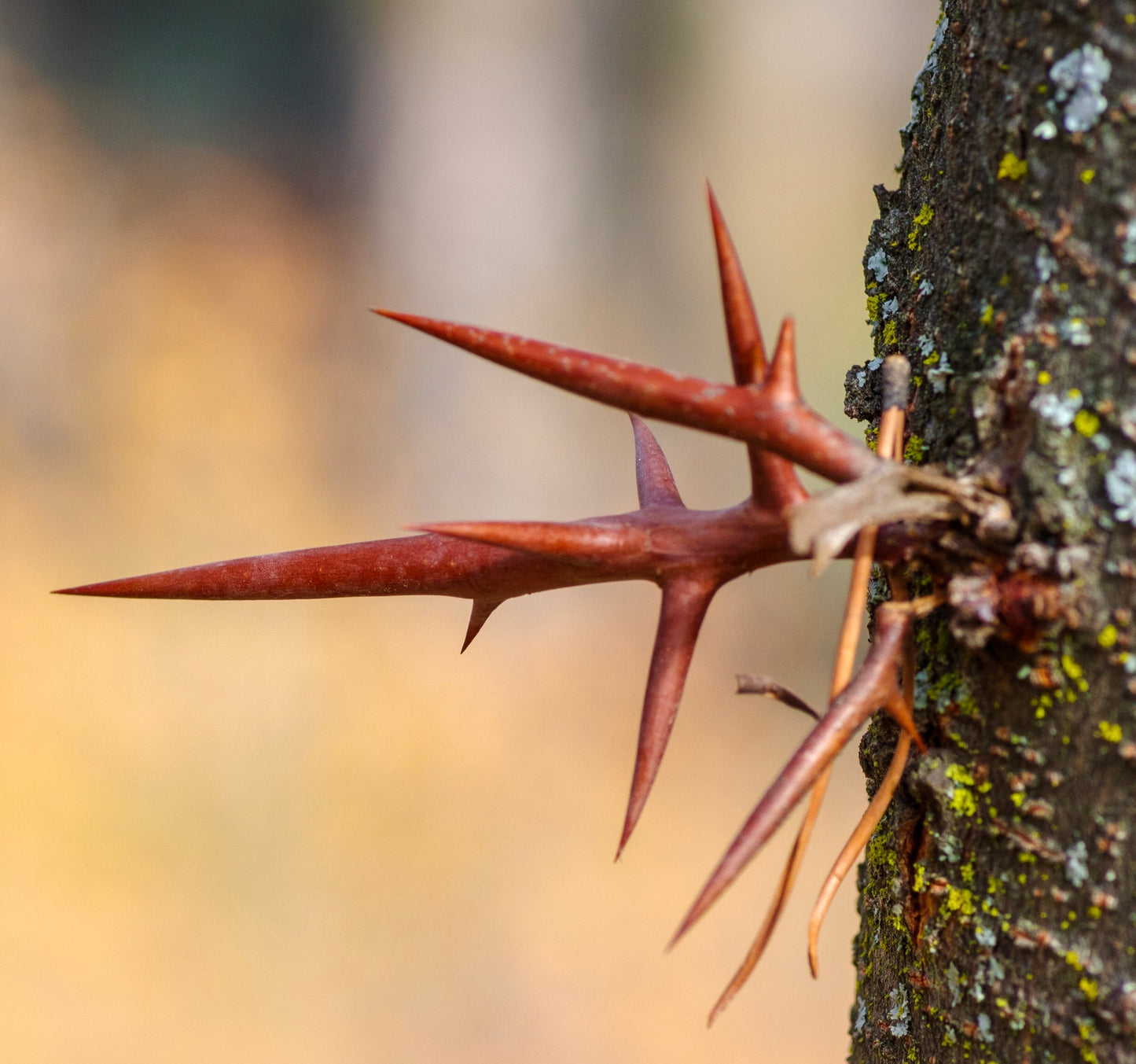- Catalogue Plants
Gleditsia triacanthos
Gleditsia triacanthos
Couldn't load pickup availability
Plant Description
Gleditsia triacanthos, commonly known as the honey locust tree, is a deciduous tree native to North America. This tree is celebrated for its graceful appearance, finely pinnate leaves, and adaptability to a wide range of soil types and conditions. The honey locust gets its name from the sweet pulp found in its pods, which are a treat for wildlife and, historically, were used by Native Americans and early settlers for their sweet flavor. The tree typically reaches heights of 30 to 70 feet (9 to 21 meters) and is often grown for its aesthetic appeal and as a shade tree.
Cultivation:
-
Climate and Location:
- Honey locust trees thrive in a variety of climates, from temperate to subtropical regions.
- Plant them in a location with full sun for optimal growth and foliage density.
-
Planting:
- Select a well-drained site with enough space to accommodate the mature size of the tree.
- Dig a hole as deep as the root ball and twice as wide. Amend the soil with organic matter to enhance fertility.
-
Watering:
- Young honey locust trees need consistent watering to establish their root systems. Keep the soil evenly moist during their first few years.
- Once established, these trees are relatively drought-tolerant and can withstand occasional dry spells.
-
Pruning:
- Prune honey locust trees during late winter or early spring to remove dead or damaged branches and maintain their shape.
- Thinning the crown can also improve air circulation and reduce the risk of disease.
-
Fertilization:
- Honey locust trees generally do well in average garden soils without the need for frequent fertilization. However, you can apply a balanced, slow-release fertilizer in early spring if growth appears slow or leaves are pale.
-
Mulching:
- Apply a layer of mulch around the base of the tree to conserve soil moisture, suppress weeds, and maintain stable soil temperatures.
-
Pests and Diseases:
- Honey locust trees are susceptible to certain pests and diseases, such as locust borers and leaf spot diseases. Monitor the tree for signs of infestations or diseases and treat as needed.
-
Propagation:
- You can propagate Gleditsia triacanthos from seeds collected in the fall or by taking hardwood cuttings in late winter.
-
Landscape Use:
- Honey locust trees are often used as shade trees in residential landscapes, parks, and along streets and highways due to their adaptability, aesthetic appeal, and tolerance of urban conditions.
By following these cultivation tips, you can successfully grow and appreciate the beauty and adaptability of the honey locust tree, Gleditsia triacanthos, in your outdoor environment.
IMPORTANT: Please be aware that picture 1 show adult plant not for sale, the offer is for a plant in the dimension indicated in title description.
Disclaimer: Please keep on mind that the plant may have grown since pictured. Also be aware that most plants change across seasons. If present foliage could have been fallen or change in its color.
Botanical family: Fabaceae
Botanical genus: Gleditsia
Botanical species: Gleditsia triacanthos
SKU:BA-1848-S
Cultivation
Cultivation
Additional information
Additional information
Plant Height:
Plant Diameter:
Picture Taken on:
Pot Size:
Grafted/Not Grafted:


